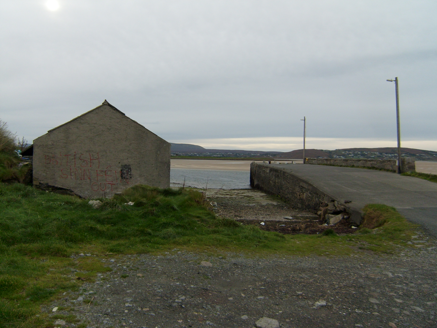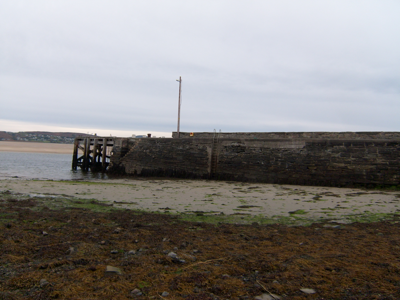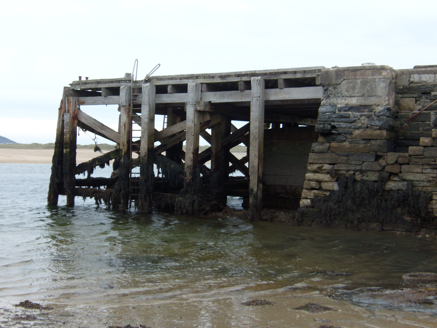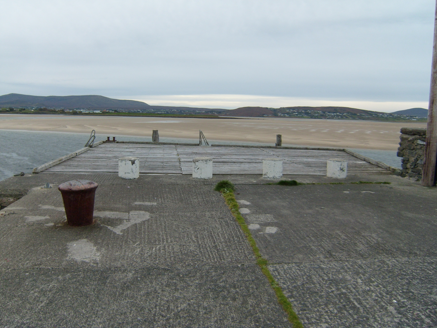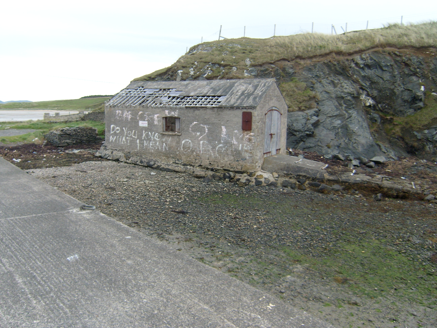Survey Data
Reg No
40902416
Rating
Regional
Categories of Special Interest
Architectural, Technical
Original Use
Pier/jetty
In Use As
Pier/jetty
Date
1845 - 1900
Coordinates
192237, 433614
Date Recorded
26/04/2014
Date Updated
--/--/--
Description
Pier/jetty, erected c.1849 and extended by timber section to southwest end c.1898. Constructed of battered coursed squared rubble stone masonry with rubble sandstone wall to seaward/northwest side having cement coping. Flight of cut-stone steps inset to southwest end of pier. Concrete deck with concrete bollards to southwest verge of stone pier, cast-iron bollard to southwest end, and wrought-iron hoop restraints to southeast verge. Timber deck to later extension supported on cross-braced timber superstructure. Metal ladder to southeast elevation of pier stone wall and to southeast elevation and to southwest end of later timber section. Concrete slipway adjacent to southeast side of pier. Detached single-bay single-storey former coastguard boathouse adjacent to east, built c.1885, having remains of pitched natural slate roof with later felt covering, rendered rubble stone walls with cast-iron pattress-plate and wrought-iron tie-bar, camber-arch window opening to northwest side elevation with wrought-iron bars, and with segmental-headed carriage-arch opening to southwest gable end having battened timber double-leaf door. Rubble stone slipway to southwest of boathouse, with cement coping. Located north-west of An Fál Carrach [Falcarragh] jutting into Bá Bhaile an Easa [Ballyness Bay].
Appraisal
This rubble stone pier was built about 1849 by the Board of Public Works, possibly as a famine relief scheme. It replaced a ruinous pier or jetty stated in the First Report of the Commissioners of Inquiry into The State of the Irish Fisheries (1836) to have been erected in 1831, 'and the persons employed for the purpose were paid in provisions sent for the relief of the district. This pier has not improved the fisheries'. The Board of Public Works carried out a survey for the new pier in 1846 and by 1852-3 the new pier was described as a 'convenient stone wharf, affording accommodation and shelter in a wild, remote district'. This pier is a reminder of the engineering achievements of the mid-nineteenth century that facilitated the economic and social development of the district. Its survival and continued use is a testament to the quality of its design and construction. It acts as a tangible reminder of the maritime activities that traditionally supported the local economy. The pier is also of technical significance and was built using local masonry and labour. The flight of cut-stone steps, metal mooring hoops and cast-iron bollard add interest. The associated coastguard boathouse was built about 1885 (when a new coastguard station was built to the southeast) and replaced an earlier boathouse that lay adjacent to the east and that was extant in 1837; this boathouse adds significantly to the setting of the pier. The whole forms part of the extensive maritime heritage of Dún na nGall [County Donegal] and, with its fine stonework, remains a prominent and attractive landmark.
